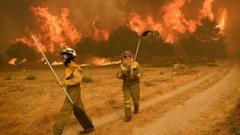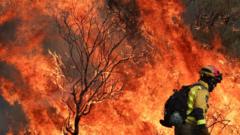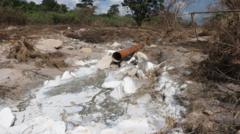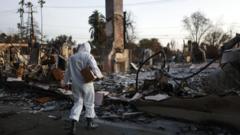**The American Lung Association warns that recent environmental policy changes could exacerbate air quality issues affecting millions.**
#Nearly Half of Americans Face Air Quality Threats, New Report Reveals

#Nearly Half of Americans Face Air Quality Threats, New Report Reveals
**New findings highlight the alarming state of air pollution across the United States amidst proposed regulatory rollbacks.**
At least 156 million Americans, representing approximately 46% of the nation’s population, are at risk due to unhealthful levels of ozone and particulate matter, as highlighted in the latest "State of the Air" report by the American Lung Association. The findings suggest that proposed rollbacks in environmental regulations by the Trump administration are likely to aggravate the air quality crisis.
“The pivotal strides in lung health and public health have largely been thanks to the Clean Air Act,” stated Dr. Panagis Galiatsatos, a pulmonologist from Johns Hopkins School of Medicine and spokesperson for the association. He emphasized the ongoing need for legislative action to regulate air quality.
The report, which assesses air quality metrics from 2021 to 2023, coincides with a record-setting wildfire season in Canada that significantly impacted air quality in various parts of the U.S. It ranks air pollution levels in numerous counties, employing a grading system from A to F.
While historical data reveals that the Clean Air Act has contributed to an approximate 80% decline in major pollutants since its introduction in 1970, the current report shows alarming statistics: about 156.1 million individuals are subjected to air that received an F grade for at least one pollutant. Furthermore, at least 42 million people reside in regions that have failed to meet standards for all three pollutants assessed. Among the 885 counties with air quality monitoring, 480 were reported to have failed at least one of the critical pollution assessments.
As discussions surrounding air quality policies continue, the American Lung Association’s findings underscore the urgent need for protection measures to ensure that air quality does not deteriorate further, threatening public health and livelihoods across the country.
“The pivotal strides in lung health and public health have largely been thanks to the Clean Air Act,” stated Dr. Panagis Galiatsatos, a pulmonologist from Johns Hopkins School of Medicine and spokesperson for the association. He emphasized the ongoing need for legislative action to regulate air quality.
The report, which assesses air quality metrics from 2021 to 2023, coincides with a record-setting wildfire season in Canada that significantly impacted air quality in various parts of the U.S. It ranks air pollution levels in numerous counties, employing a grading system from A to F.
While historical data reveals that the Clean Air Act has contributed to an approximate 80% decline in major pollutants since its introduction in 1970, the current report shows alarming statistics: about 156.1 million individuals are subjected to air that received an F grade for at least one pollutant. Furthermore, at least 42 million people reside in regions that have failed to meet standards for all three pollutants assessed. Among the 885 counties with air quality monitoring, 480 were reported to have failed at least one of the critical pollution assessments.
As discussions surrounding air quality policies continue, the American Lung Association’s findings underscore the urgent need for protection measures to ensure that air quality does not deteriorate further, threatening public health and livelihoods across the country.





















